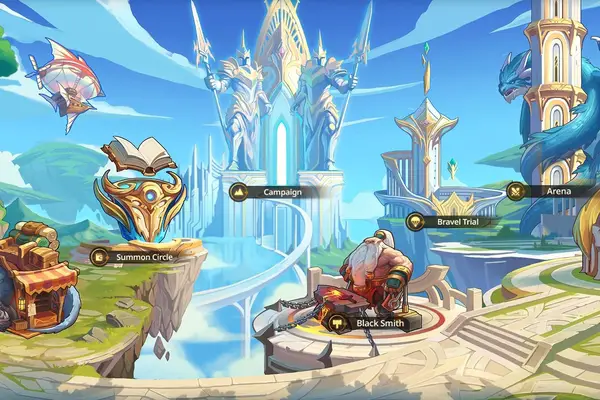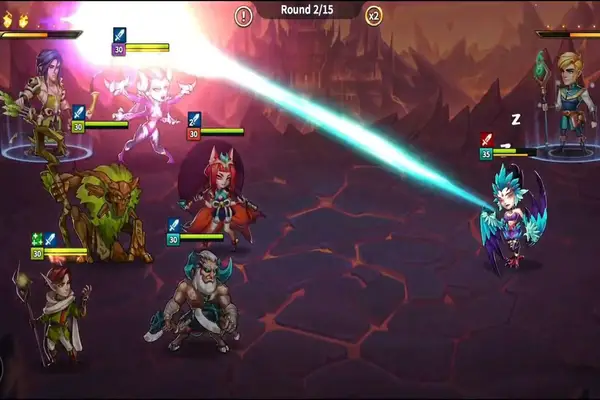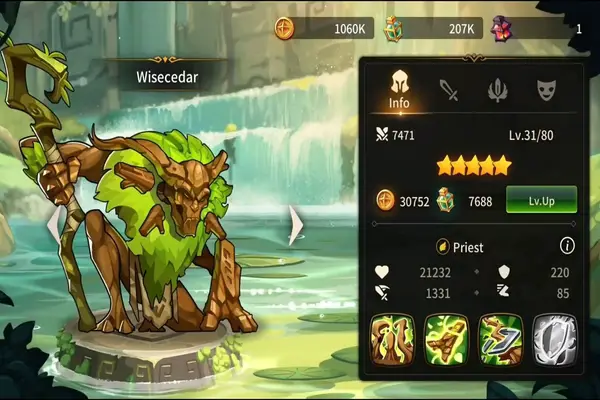A Not-So-New Era
Gacha RPGs are an ever-growing genre in mobile games, and for good reason. When done right, they can be a distraction that lasts hundreds of hours. That feeling of constantly progressing and building your team is an addictive one. As happens with any emerging genre, developers have been spurred into the type of scramble that only the scent of money can bring. Gacha RPGS can wildly vary in quality due to how pay-to-win mechanics easily fit into the formula. Summoners Era is a weird case: it lies in a middle ground I didn’t think existed. Developer Zitga Studios have created an inconsistent experience; this game has the highs and lows of a roller coaster. I went from frustrated to satisfied innumerable times as I uncovered the game’s various modes and mechanics. Summoners Era isn’t easy to recommend.

A Sputtering Start
Summoners Era takes a while to get going. It’s more of a set it and forget it game in comparison to others in the genre. Build a team, figure out where they should be positioned in your 5-hero lineup, and battle. After making some headway in the campaign, I noticed there was no stamina meter to halt progression. I’d long ago accepted that as a mainstay in these kinds of games. Not having any sort of restriction on how long you can play is a breath of fresh air. That said, there’s a bizarre low point in the game’s presentation. The music is passable, but the sound effects in battle seem like they’re ripped from a sound library. There was an enemy whose spell sounded like they pitched down a “buzzing fly” sound effect and put it through a synthesizer. The cacophonous sounds of war mar an otherwise solid presentation.
This is a common occurrence in Summoners Era: an aspect of the game impresses me, followed by something that baffles me. I’d liken this game to Usain Bolt trying to run with his shoes tied together. It’ll make strides that other games in the genre should be taking note of while tripping over its own feet. There’s a ton of modes, most of which give many ways to grind away at the game’s wealth of content. However, the Guild system is broken due to heavy restrictions on guild capacity in relation to players are trying to find one.

In for the Long Haul
Summoners Era offers a massive amount of free-to-play value if you invest the time. I got over two hundred chances at rolling for new characters with summon scrolls that’d normally cost about a dollar each. My lineup was full of high-rarity heroes with diverse, multifaceted abilities within hours of starting the game. I could see the synergies in my composition and figure out where new heroes could fit in. Summoners Era allows you to reset a character and harvest the experience invested into their levels. This means that it’s easy to try and substitute new heroes into your lineup. The game’s depth comes from what can be done with those teams. The layers of strategy keep things challenging while cutting through the repetition that can set in with long RPGs.
Those five heroes can be placed in four different ways: 1-4, 2-3, 3-2, 1-4. Those numbers indicate how many heroes are in front, and how many are in the back. Being in the back will grant bonus damage and being in the front will grant bonus health. For instance, going with a 1-4 composition puts one tank out front and four DPS characters in the back. If you get only one tank from your various summons, you can still have a strong team. However, there’s more to the system than that. Let’s say there’s an enemy that targets the backline exclusively, leaving tanks alive and damage characters dead. It’s possible to put one tank in the back and the other four damage characters up front to counter the enemy. This gives Summoners Era a layer of strategy that flat-out doesn’t exist in other games in the genre.

The Path Least Traveled
However, I didn’t find myself hitting any barriers in gameplay for not having the expensive stuff, so I kept playing. A few hours later, a starter pack that came with someone labeled as the “BEST HEALER!!!” popped up for me. I didn’t think much of it at the time and chalked the proclamation up to poor translation. As soon as I tried the PvP mode, it turned out that he was indeed the best healer. Every round I played against him was a loss because of how strong his healing was in comparison to my lineup. It was disheartening to know that the developers wanted my five dollars so desperately. It looks like it worked judging by how often I was against the hero.
This didn’t ruin the rest of the game, but it really soured it. The healer previously mentioned can be achieved through crafting or luck through summon. That said, knowing players have the option of a better team by paying for it was a turn off. I wanted desperately to like this game. Strategic elements, varied and interesting character designs and mechanics. Everything I want is here. However, there’s events that can’t be completed without paying for VIP status. The Guild is a part of the game I never got to explore due to its poor implementation. Between broken mechanics and blatant profiteering, this is a game I can’t recommend. There’s a point where it’s really, really difficult to progress without putting money into the game. It might take dozens of hours to hit you, but the paywall is there. That wall isn’t one I’m inclined to climb.



Leave a Reply